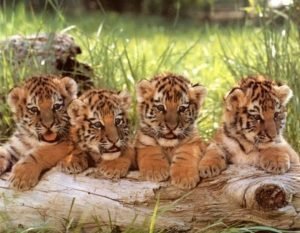
Dr. Ravinder Pall Saini, I.F.S. (retd.)
PhD. (Forest Entomology), MBA (HRM)
Member, Board of Management, Forest Research University (FSU), Dehradun
DEHRADUN, 29 JULY 2022
TIGER – The Magnificent Royal, Regal, Majestic and Courageous Wild Species :
“The Greatest Glory In Living Lies Not In Never Falling, But In Rising Every Time We Fall.” … Nelson Mandela
“A Tiger Does Not Shout It’s Tigritude It Acts” … Wole Soyinka
The theme for this year’s World Tiger Day 2022 is – ” India Launches Project Riger to revive the tiger population”.
Ecological Value :
Tigers are an integral component of our planet’s natural heritage; they also have a great enlightening and historical significance. No doubt they are also crucial for the ecosystems in which they reside. We can’t dispense with that tiger not only protect the forest by maintaining ecological integrity but also, they bring highest levels of protection and investment to an area. Therefore, it is recognized as “umbrella species” that is their conservation also conserve many other species in the same area.

Causes behind the dwindling population of Tigers world over are:
- Poaching and illegal trade: For traditional Chinese medicines, tigers face problem of poaching as there is a demand of every part of the body of tiger. In the illegal wildlife trades, they keep high prices.
- Habitat loss: Nowadays and with the increasing population forest are becoming less in numbers. Clearing of forests for several reasons like agriculture, industries, etc. made loss of around 93% of the natural habitats of tigers.
- Climate Change: With the rise of sea level due to climate change led to wipe out of Sundarbans one of the habitats of Royal Bengal Tigers.
- Several diseases are also the key factor. Several animals die and there is no way to ascertain the cause of their death. Certain diseases spread epidemic like Feline Panleucopania, tuberculosis etc.
- The study of Wildlife Institute of India (WII) in Ranthambore Tiger Reserve (RTR) says that tiger population in the park shown a loss of genetic diversity over the years.
- Degradation of Habitats: Big cats want secure and disturbance free habitat to survive but due to several developmental activities in the landscape of the protected areas (PAs) pose big threat to tigers.
- Man-animal conflict also affects the population of big cats.
- Lack of protection infrastructure.
- Increasing tourism day by day is also one of the factors for the decline in tiger numbers.
- Lack of funds for the conservation of tiger is also one of the main reasons.

HISTORY OF INTERNATIONAL TIGER DAY:
International Tiger Day incepted in 2010 after it was noticed that there is a sharp decline of all wild tigers and > than 95% had disappeared in the last century itself, with about only 3,000 of them remaining. Habitat loss, climate change, hunting, and poaching are only some of the factors that are responsible for the decline in the tiger population. Along with the preservation of these species, the day also aims to protect and expand their habitats. Many international organizations such as the WWF, the IFAW, and the Smithsonian Institute also observe International Tiger Day.

Tigers Habit:
Tigers generally gain independence at around two years of age and attain sexual maturity at age three or four for females and four or five years for males. Juvenile mortality is high, however—about half of all cubs do not survive more than two years. Tigers have been known to reach up to 20 years of age in the wild.
Males of the larger subspecies, the continental tiger, may weigh up to 660 pounds. For males of the smaller subspecies—the Sunda tiger—the upper range is at around 310 pounds. Within both subspecies, males are heavier than females.

Tigers are mostly solitary, apart from associations between mother and offspring. Individual tigers have a large territory, and the size is determined mostly by the availability of prey. Individuals mark their domain with urine, faeces, rakes, scrapes, and vocalizing.
Across their range, tigers face unrelenting pressures from poaching, retaliatory killings, and habitat loss. They are forced to compete for space with dense and often growing human populations.

IUCN New Subspecies Classifications:
Since 2017, IUCN has recognized two tiger subspecies, commonly referred to as the continental tiger and the Sunda Island tiger. All remaining island tigers are found only in Sumatra, with tigers in Java and Bali now extinct. These are popularly known as Sumatran tigers. The continental tigers currently include the Bengal, Malayan, Indochinese, and Amur (Siberian) tiger populations, while the Caspian tiger is extinct in the wild. The South China tiger is believed to be functionally extinct.

How Can We Conserve This Magnificence?
To ensure a world with healthy populations of wild tigers, we strive to stop the killing and trafficking of tigers.
Key strategies:
- Protect tigers and their habitat.
- Build capacity in range states.
- Reduce human-tiger conflict.
- Conduct scientific research on tigers to help inform conservation strategies.
- Promote tiger-friendly policies.
- Monitor tiger numbers, population trends, and threats to tigers and
their habitats.GOD SAVE THE TIGER BY GRANTING SANITY TO MANKIND

Advertisement:




























[…] proposed Tiger Reserve will span over 52,989.863 hectares of land including 29,958.963 hectares of buffer zone and […]